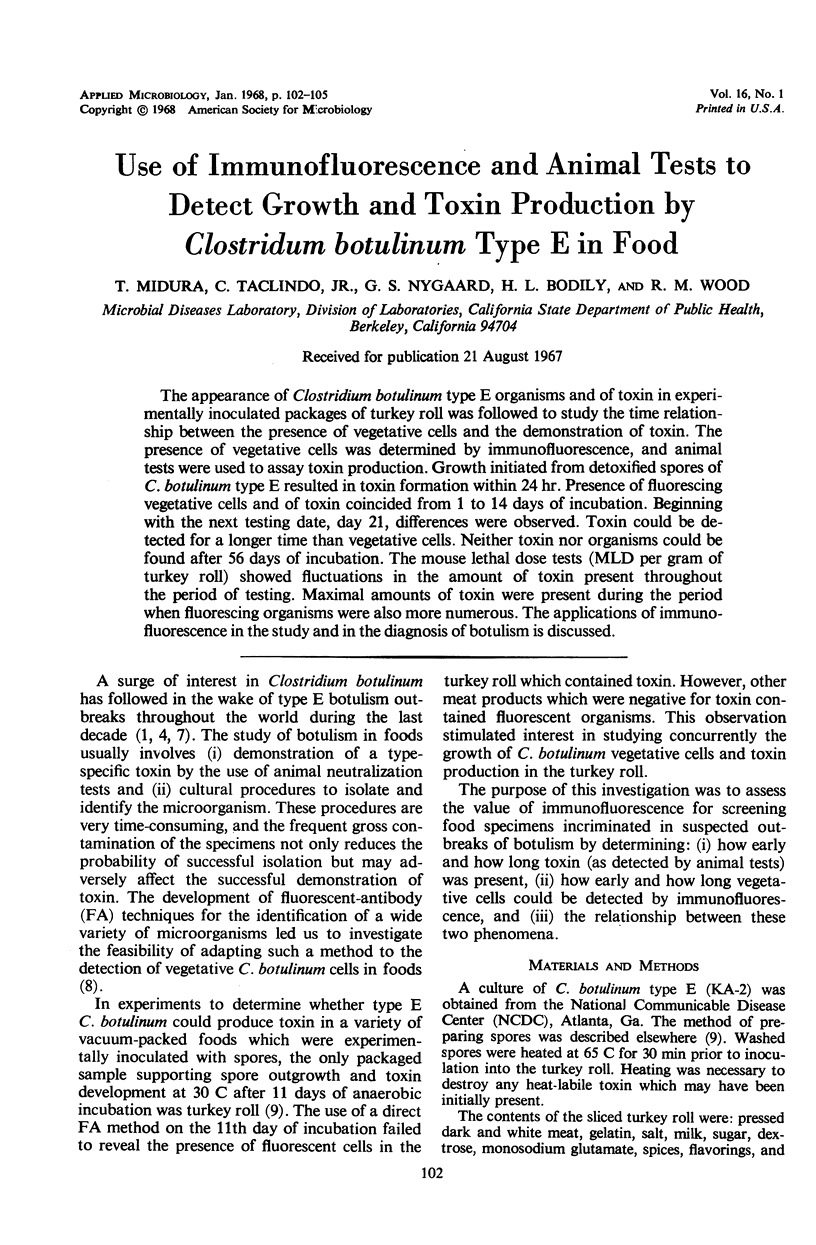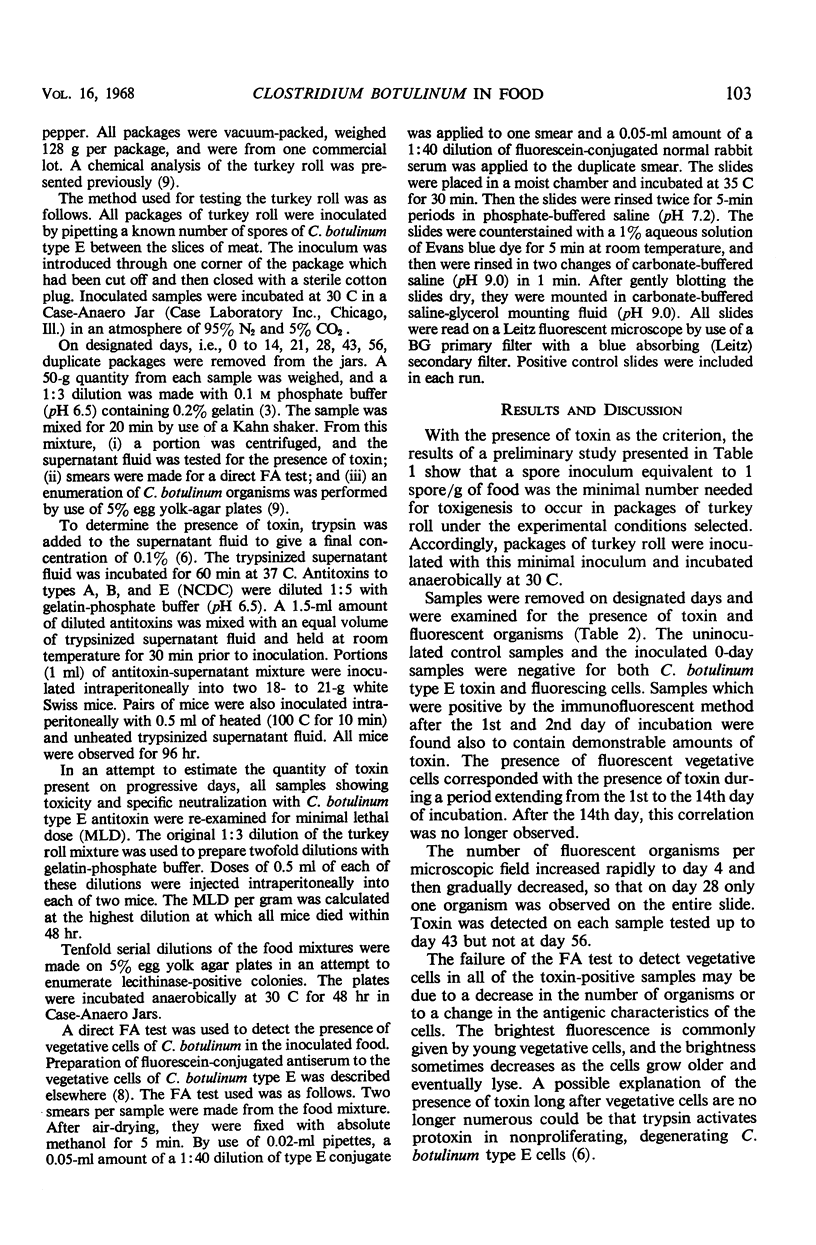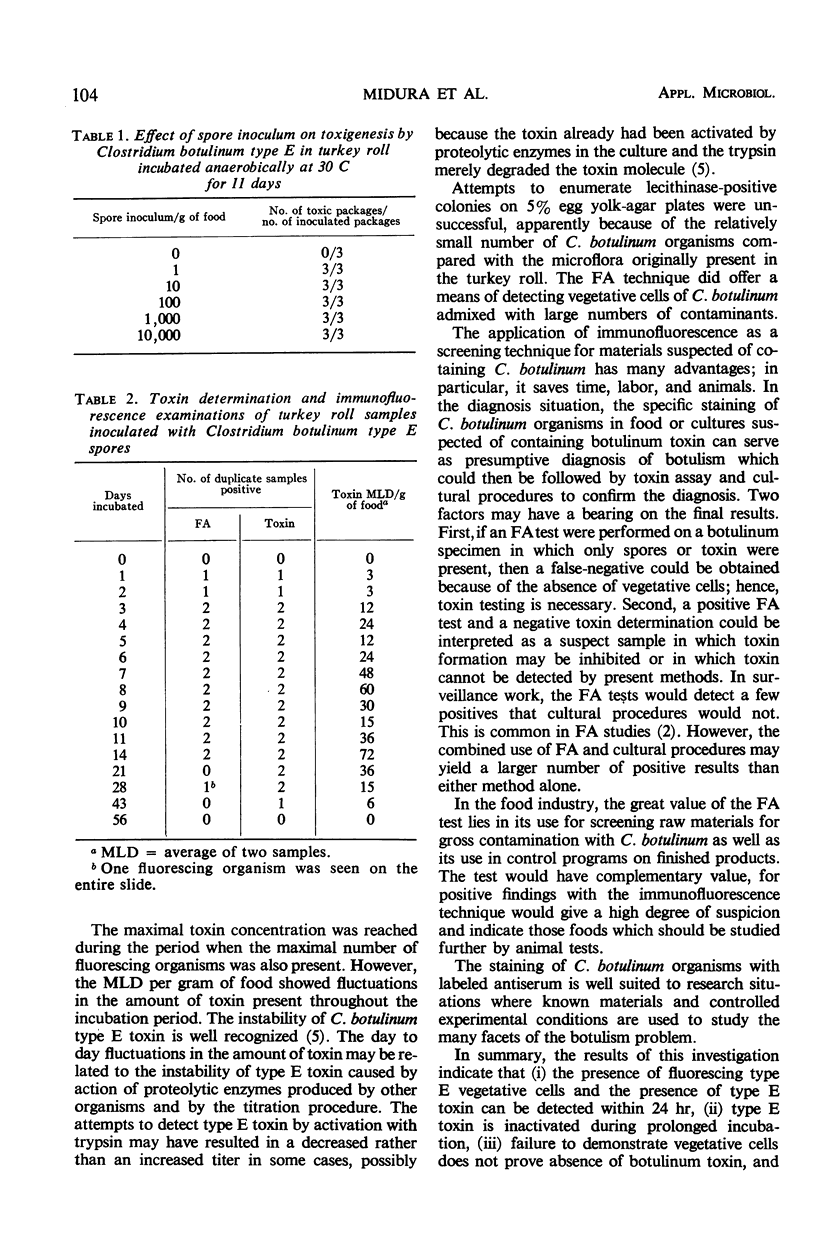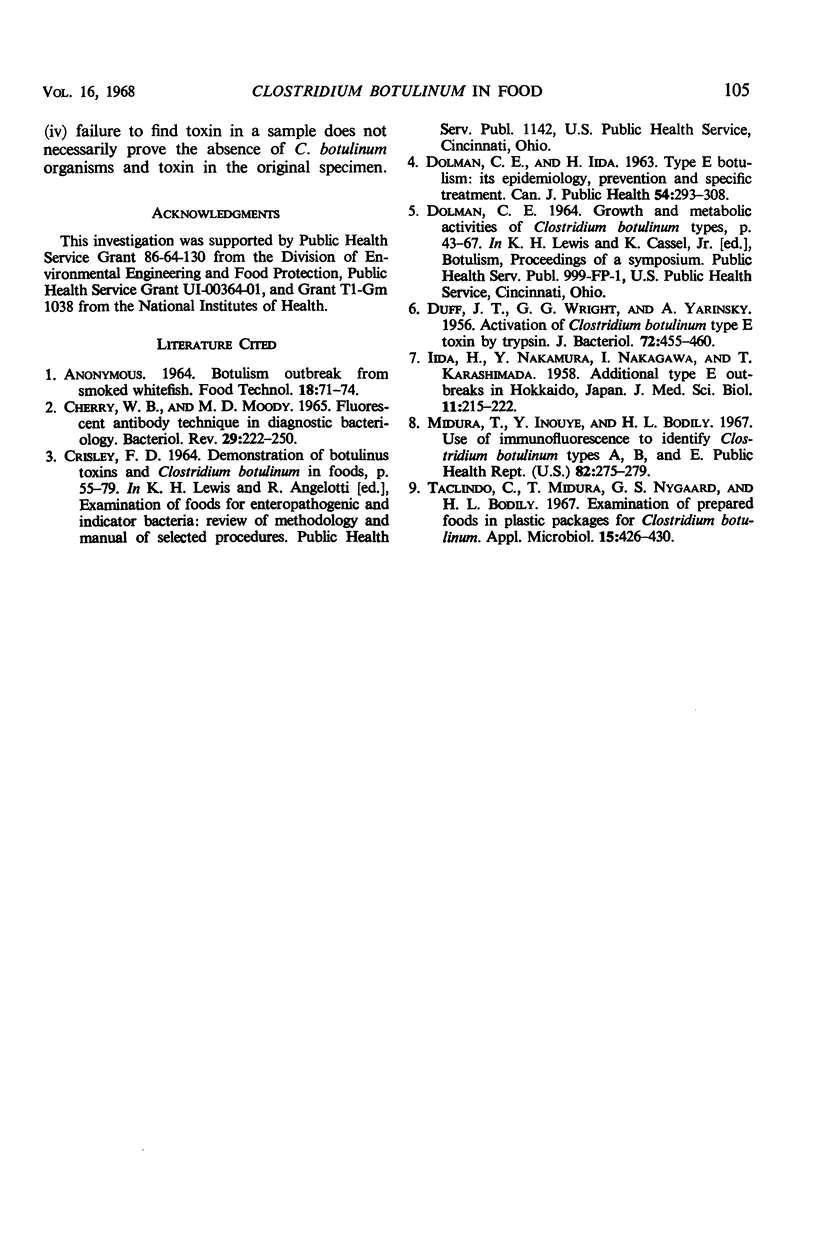Abstract
The appearance of Clostridium botulinum type E organisms and of toxin in experimentally inoculated packages of turkey roll was followed to study the time relationship between the presence of vegetative cells and the demonstration of toxin. The presence of vegetative cells was determined by immunofluorescence, and animal tests were used to assay toxin production. Growth initiated from detoxified spores of C. botulinum type E resulted in toxin formation within 24 hr. Presence of fluorescing vegetative cells and of toxin coincided from 1 to 14 days of incubation. Beginning with the next testing date, day 21, differences were observed. Toxin could be detected for a longer time than vegetative cells. Neither toxin nor organisms could be found after 56 days of incubation. The mouse lethal dose tests (MLD per gram of turkey roll) showed fluctuations in the amount of toxin present throughout the period of testing. Maximal amounts of toxin were present during the period when fluorescing organisms were also more numerous. The applications of immunofluorescence in the study and in the diagnosis of botulism is discussed.
Full text
PDF



Selected References
These references are in PubMed. This may not be the complete list of references from this article.
- CHERRYWBMOODY M. D. FLUORESCENT-ANTIBODY TECHNIQUES IN DIAGNOSTIC BACTERIOLOGY. Bacteriol Rev. 1965 Jun;29:222–250. [PMC free article] [PubMed] [Google Scholar]
- DOLMAN C. E., IIDA H. Type E botulism: its epidemiology, prevention and specific treatment. Can J Public Health. 1963 Jul;54:293–308. [PubMed] [Google Scholar]
- DUFF J. T., WRIGHT G. G., YARINSKY A. Activation of Clostridium botulinum type E toxin by trypsin. J Bacteriol. 1956 Oct;72(4):455–460. doi: 10.1128/jb.72.4.455-460.1956. [DOI] [PMC free article] [PubMed] [Google Scholar]
- IIDA H., NAKAMURA Y., NAKAGAWA I., KARASHIMADA T. Additional type E botulism outbreaks in Hokkaido, Japan. Jpn J Med Sci Biol. 1958 Aug;11(4):215–222. doi: 10.7883/yoken1952.11.215. [DOI] [PubMed] [Google Scholar]
- Midura T. F., Inouye Y., Bodily H. L. Use of immunofluorescence to identify Clostridium botulinum types A, B, and E. Public Health Rep. 1967 Mar;82(3):275–279. [PMC free article] [PubMed] [Google Scholar]
- Taclindo C., Jr, Nygaard G. S., Bodily H. L. Examination of prepared foods in plastic packages for Clostridium botulinum. Appl Microbiol. 1967 Mar;15(2):426–430. doi: 10.1128/am.15.2.426-430.1967. [DOI] [PMC free article] [PubMed] [Google Scholar]


